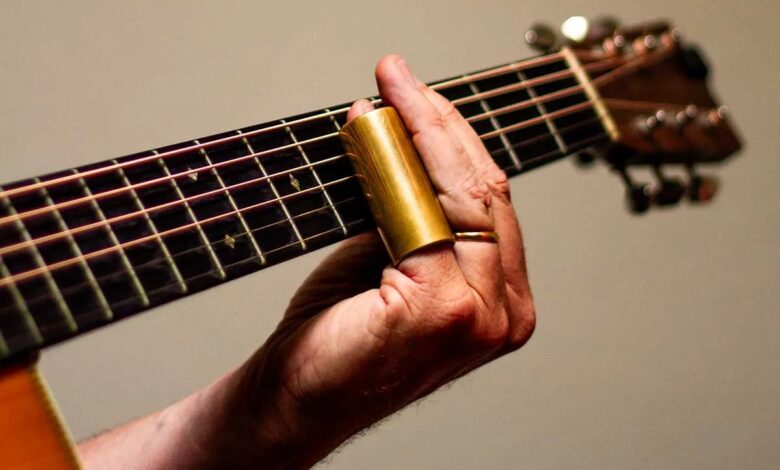Boost Your Bottleneck Slide Playing by Focusing on Chord Tones

There are several ways to approach learning bottleneck slide guitar. The natural inclination is to focus on one string, allowing the slide to do what it does best: deliver a vocal-like quality with the freedom of movement that stretches the 12 semi-tone octave range to a wider spectrum of microtonal possibilities. Another approach is to play triplets across multiple strings in an open tuning, like on the Elmore James classic “Dust My Broom.”
These are good places to start, but as you become more adept with your technique you will want to explore other ways of navigating the guitar neck. One great next step is to focus on chord tones, which give you not only a solid foundation for expanding your slide playing but a template for soloing in general, with or without slide.
In this lesson we will look at chord shapes in standard tuning using a 12-bar, three-chord structure in the key of G major. We will isolate a three-fret span that makes slide movement more compact and allows you to identify chord tones for any I–IV–V progression within a given range.
Week One
Let’s start by looking at possibilities for the I chord (G). In Example 1, there are two versions of a common G major triad (G B D) and two of a G7 chord (G B D F). The first G is simply a larger version of the second chord, which for our purposes of constructing solos is a more useful shape, since it focuses on the higher strings. The same is true of the two versions of G7.
In Examples 2 and 3, use your slide to arpeggiate the chords, moving from string to string, playing the chord tones one at a time. Slide into each note from one fret below. The licks in Examples 4–7 are derived from the previous chord shapes. In Example 4, descend from D to B to F–G–F. The slide from Bb to B (minor third to major third) is a critical component of blues and rock; it creates a dynamic tension and is particularly effective over dominant chords in a I–IV–V progression.
Example 5 relies on the open D and G strings as complements to the fretted chord tones F, B, and D. I like to adjust my slide as I ascend or descend within a phrase. In Example 6, the slide covers both strings 2 and 1 as you slide from the second to the third fret. Then, as you prepare to slide on string 3 from the third to fourth frets, move the slide up toward you, and then a little more as you navigate to play the fourth-string G.
Apply the same strategy, but in reverse sequence, to Example 7. Make sure the slide is covering the fourth string, then move to cover three strings, and finally just two as you slide from the third-fret D to the sixth-fret F.

Beginners’ Tip #1
Slides are made from glass, metal (brass/steel), ceramic, and other materials. For acoustic playing I recommend a slide with a bit of mass; a little extra weight gives you a louder, more responsive sound.
That’s the end of Week One. The complete lesson features four weeks of workouts (plus a bonus exercise.) There are two ways to access the full video and musical examples: Join our community at Patreon.com/acousticguitarplusOR Buy the September/October 2024 issue of Acoustic Guitar magazine.



